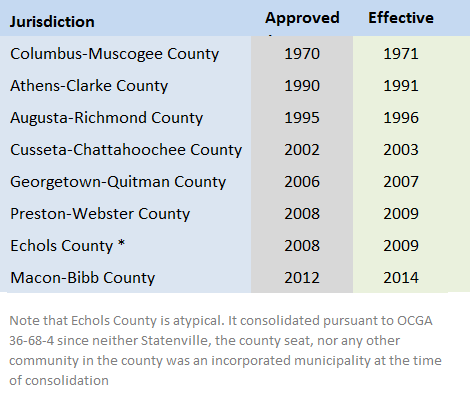By Elliott Brack, editor and publisher | For years, people in Georgia have been concerned that by having 159 counties, many of them small ones, government is too costly and inefficient.
 Meanwhile, the people who control those counties, the big landowners and the timber companies, are pleased as punch about owning property in smaller counties. After all, it’s a whole lot easier to control government when you have just a few voters than it is in the larger counties, where a diverse and educated population sometimes votes slackard politicians out of office. You don’t see that happening often in the smaller counties.
Meanwhile, the people who control those counties, the big landowners and the timber companies, are pleased as punch about owning property in smaller counties. After all, it’s a whole lot easier to control government when you have just a few voters than it is in the larger counties, where a diverse and educated population sometimes votes slackard politicians out of office. You don’t see that happening often in the smaller counties.
Local government once was worse. Back before the 1950s, Georgia politics and government operated under the County Unit System, deliberately set up so that the large population counties would have little voice in electing state officers and governing the state. It worked this way: in statewide political races, the eight largest counties were given six “county unit” votes; the next 30 counties got four county unit votes each, and the 121 smallest counties got a measly two county votes each.
But those two votes per county were mighty. In statewide elections, the candidate that won the majority of votes in any county got that county’s county unit votes. The 121 smallest counties had 242 unit votes, while the other 36 counties had only 168 county unit votes.
Finally, the courts saw the errors of those ways, and now it’s one-person, one vote. Small counties no longer dominate the state.
 Georgia is getting some relief now in ways we didn’t imagine. Instead of eliminating or combining counties, as many have wanted, now smaller counties are consolidating their county and county seat city governments.
Georgia is getting some relief now in ways we didn’t imagine. Instead of eliminating or combining counties, as many have wanted, now smaller counties are consolidating their county and county seat city governments.
Jim Grubiak of the Association County Commission of Georgia says that Columbus and Muscogee were the first two governments to merge, way back in 1971. Now three other large cities and counties have merged into one government: Athens-Clarke County; Augusta-Richmond County; and most recently, Macon and Bibb County.
Recently a new angle has emerged: some smaller counties in Georgia are consolidating their county and city governments. The first to merge was Chattahoochee County back in 2004, with a population of 11,837. The county seat is Cusseta, which has 1,208 residents. (See accompanying table.) The other consolidations followed. In Webster County there were 2,719 people, including only 379 in the county seat of Preston.
Just this week word was out that Taylor County (8,464 residents) was talking to Roberta (1,006 population) about merging. In discussion for a couple of years is the possible merger of Pulaski County and Hawkinsville’s government.
All this is mostly encouraging news. Look what has happened: Once we had 159 county governments, plus 159 county seat (city) governments. That’s 318 governments, but now we’re down to a total of 310. And there may be more consolidation coming.
Who would have thought fewer governments would have happened this way?
One other wrinkle: Once what is Fulton County was three counties, Fulton, Campbell on the Southside, and Milton on the North. Fulton absorbed the other two failing counties during the Depression. Now some people in North Fulton are wanting to win back everything north of the Chattahoochee River into a county of their own, and get back the name of Milton. Watch the Legislature.
It could pave the way.










Follow Us